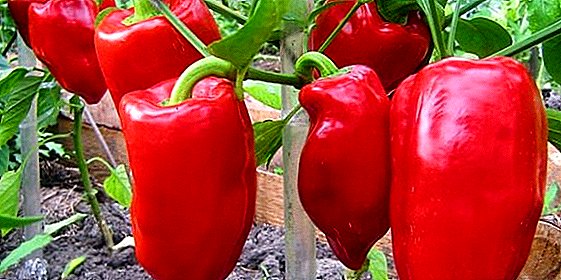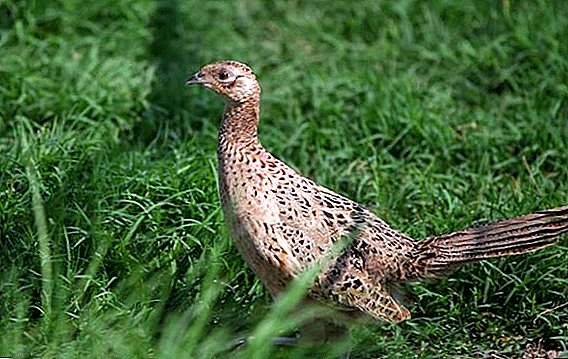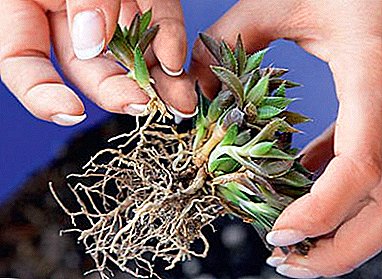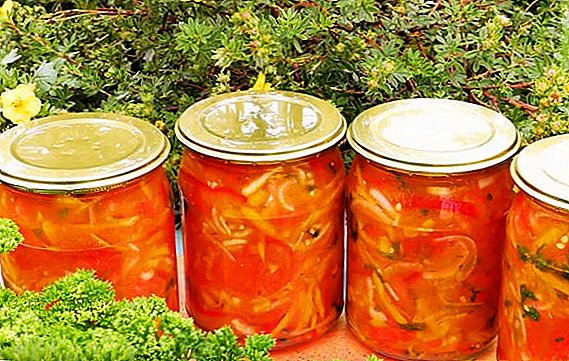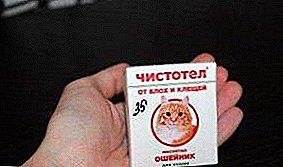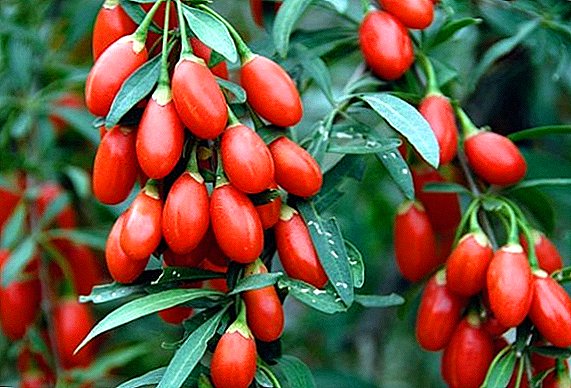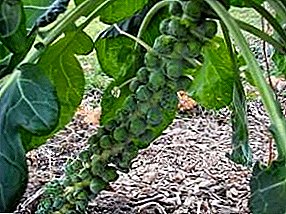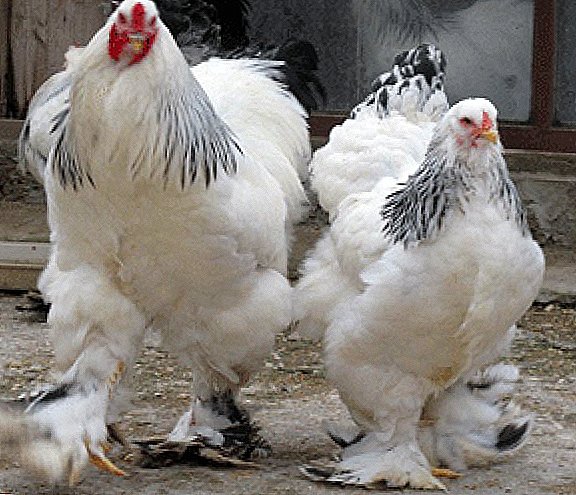
Today, breeding poultry is a very popular activity.
It allows you to eat always fresh, natural, clean meat and eggs.
But, if we are talking about breeding chickens Brahma, then it will also bring aesthetic satisfaction.
Of course, this breed of chickens will be the decoration of any bird yard.
They have always been distinguished by elegant coloring, calm, balanced disposition, nobility, endurance.
Due to these advantages, as well as its viability and large size, this type of chickens has gained a wide range of poultry farmers-admirers.
Poultry lovers of chicken hen are most often bred as decorative or to preserve the gene pool.
What are the main features of the Pomfret breed?

This breed of chickens was bred by long selection and crossing. Among the Malay and Cochinites, the strongest and largest individuals were selected, after which they were crossed. Then a long time selected "in itself."
It is worth noting that those Brahms that were originally, and the Brahma of today are significantly different.
In the recent past, the breed held primacy with its meat qualities. The live weight of the rooster could reach up to 7 kilograms, it was common for the youngsters to grow rapidly (at the age of five months they weighed about 3 kilograms and reached puberty).
Over time, the productive qualities of this type of hen decreased. You can explain all the banal selection of birds for the next generation only for decorative signs, and valuable productive qualities were completely neglected.
Thus, gradually the bird began to acquire an exclusively decorative value.
The live weight of the roosters of the Brahma known today can reach 4.5 kilograms. Although this figure can hardly be called small, but everything is known in comparison. Most often, this breed belongs to the meat direction.
Are common exterior signs these noble birds today:

- Pomura breed chickens are large and somewhat rounded;
- The head is small;
- Wide forehead;
- Comb is small, pods, three-row, has no sharp end;
- Eyes deep set, hidden under deep brow ridges, because of this, the look seems gloomy;
- The color of the ear lobes is red, the shape is elongated;
- Small earrings;
- Beak short;
- There is a skin fold, formed under the beak on the neck;
- The neck is of medium length, with a magnificent mane. At the beginning there is a slight bend;
- The broad massive chest comes forward;
- The tail-back-neck line has the appearance of a lyre;
- The body looks very massive;
- The back is wide;
- Tail sticking up, short;
- Legs from the outside are strongly feathered, strong, massive;
- The plumage is rigid, abundant, adjacent to the body;
- Very attractive soft color colors plumage.
The hens are more rounded and slightly shorter than the legs, compared with roosters.
Why do poultry breeders prefer to grow chicken brama? Let's talk about the merits
You are going to breed domestic birds and have not yet figured out which breed to prefer: meat, broilers, layers, or you just want to breed for aesthetic pleasure, the Brahma chicken breed would be the most suitable option.

It is in this breed that most of the preferences of poultry farmers are combined: extremely beautiful coloring, improved meat qualities, thanks to the thin bone, easily tamed by hands. But first things first.
The decorative nature of this breed captivates many poultry farmers. Past these chickens without a moment of admiring, it is simply impossible to pass. Sharm them adds a proud posture. And at the same time they hide behind this image. calm, gullible birds, easy-to-trust and gullible birds.
The main advantage of Brahma chickens is a very good adaptation in cold climates.
Growing up small chicks can be a bit difficult, but adult birds are well settled in cold and damp conditions. This may indicate an increase in egg production in winter periods.
Poultry brooks are known to poultry farmers for their good weight gain - can reach 3-4 kilograms. Sometimes the weight of cocks is so big that it prevents them from standing steadily.
What are the flaws of Brahma hidden behind this extraordinary beauty?
If we talk about the shortcomings and difficulties of growing this breed of chickens, then it is worth mentioning:
- In spite of the high developed nursing instinct, hens of this type are not recommended to be used as hens. This unpleasant moment is explained by the large weight of the chicken; it can suppress eggs. Proceeding from this, it is better to use a mixture of egg or other small chickens for hatching chicks, since they may be 1.5 kilograms less in weight.
- Slowed chick growth. They do not just grow slowly, but very slowly. Their safety is about 70%;
- Very weak plumage plus;
- Uncertain middle finger, compared with the legs of ordinary chickens.
What are these Brahma chickens?
Today, there are two types of Brahma: European and American. More close to the Kokhinits is the European type, they have more fluffy plumage and are slightly smaller in size compared to the American type of breed.
It was later singled out: Brahma is dark and Brahma is light, after all Brahma was singled out fawn.
Brama with a dark color

Brahma dark is characterized by high adaptability to the cold damp climate. Most often, this type of chicken is bred as an ornamental. The main signs of the exterior are:
- Developed hawk shred;
- bulging, small forehead;
- head small, rather small;
- the ridge is divided into three grooves;
- beak yellow with longitudinal black stripes, slightly bent, strong;
- feet feathered, tall, thick, yellow;
- short, red colored lobes;
- brown-red eyes;
- chest wide, wider than other types of Brahma, hollow;
- skin is pink and white;
- big wings.
The rooster on the neck and mane has silvery shades, and in the middle a longitudinal stripe. The color of hens is dominated by a dark color, black feathers are bordered with a white stripe, the body has gray feathers and rows of black stripes.
Sexual maturity in Brahma the dark comes at 6-8 months of age. During this period, the chicken gains weight up to 4 kilograms, and the rooster - up to 5 kilograms. Egg production is about 120-150 eggs. Egg weight about 70 grams, shell color - cream.
It is also interesting to read about the cultivation of geese.
Fawn hens

One of the varieties of the breed is Brahma. Signs of the exterior are:
- The superciliary arches are developed, which ensures the severity of the gaze;
- The eyes are brown-red;
- The head seems very small compared to the body;
- Toes are supported only by the middle and outer;
- Legs are yellow, thick, with a strong feathering of the tops;
- The crest is divided into three reins, pea-shaped;
- The tail is of medium length;
- The back is short;
- The neck is disproportionately long.
Roosters have a mane significantly darker than the main color. Live weight at the age of 8 months can reach 4-5 pounds. Chicken Brama with a fawn color is most often bred not for the sake of meat or eggs, but as a decorative one.
Egg production is about 130 eggs per year. The live weight of the egg is 59 grams. Cream colored shell.
Brama with light color (the brightest)

Bright-colored Brama conquered most poultry farmers with its pronounced decorative effect. This type of hens is the most calm. They are easy to tame, and can also be taught to feed from the hands, because they are very trusting.
The main condition for breeding Brahma with a light color are regular walking. This type is characterized by a good transfer of a hard, humid climate. And at the same time, breeding them is not as easy as it may seem.
Pure-bred white Brahma reach 4.5 kilograms in 5-6 months and begin to lay eggs (about 160-170 pieces per year).
The shell has a cream with shades of color. Egg production rises during the winter months. On this basis, in the wintertime, Brahma is light require special care.
Signs of the exterior these are:
- The head is small with a small prominent forehead;
- The superciliary arches are well developed;
- Yellow beak has black stripes;
- The comb of red color is divided into three reins;
- Ear lobes large;
- Deep-set eyes;
- Earrings have the correct rounding, of medium size;
- The neck is disproportionately long, with a developed white mane;
- The wings are medium in size, tight to the body;
- The back is wide, short;
- Square-shaped torso massive;
- Thin bones;
- Yellow skin;
- The chest is wide, full;
- A straight set up small tail, spread out to the sides;
- Legs strongly feathered, thick;
- Common plumage abundant;
Feather legs give lightness to heavyness and fairness to Brahma. Coloring of this type is often called Colombian, because it is in this color that silver-white dominates, as well as Brahma's light one.
In addition to the main white-gray in these hens, the steering and flight wings, as well as the neck, are painted black with a greenish tint. Rooster lumbar feathers are white with a black stripe, while chickens are pure white.
Inadmissible is the bloom of yellow color on feathers, or the presence of black stripes in the lumbar strands of the rooster.
Rush begin relatively late. Cream eggshell. Egg production rises during the winter months. Egg production on average per year is about 100-120 eggs. the weight of one egg is 50-60 grams.
Live weight of roosters - 4 pounds, chickens - 3 pounds.
High or low performance in this breed of chickens?

Experienced poultry farmers who liked to grow this breed of chickens, with the answer to the question: "Why is it breed brahma?" with one voice answer: "Double benefit: eggs and meat".
Chickens up to two years old have a rather high egg production rate - around 120-150 eggs per year. After this age, egg production is significantly reduced. Brahma begin to sweep no earlier than 7.5 - 9 months. The weight of one egg is 55-60 grams.
The live weight of chickens is darker pomfret to 4 kilograms, light slightly lower - to 3-3.5 kilograms. Live weight of roosters - up to 4-6 pounds. A thinner skeleton speaks of the improved meat qualities of Brahma.
The safety of the young - 70%, and adult birds - 90%
Difficult and easy rules for breeding chickens Brama
Many people, buying hen Brahma for aesthetic pleasure, sometimes do not quite understand that it is this "aristocratic charm" that requires additional attention.
It cannot be said that taking care of Brahma is especially hard, but there are rules that are just as essential for proper removal. If they are not followed, the birds are likely to get sick often and not bring profit.
Removal of chickens: what difficulties and nuances will be faced
They grow very slowly and very demanding care and feed. The hatchability of chickens is almost one hundred percent. The main feature of the incubation period is an incubator that is well heated to very high temperatures. This is especially true after laying eggs during the first 5-6 days.
Immediately after the hatching of chickens to bring them out on the street is absolutely impossible. It is advisable to move them into a straw box, under an artificial light lamp, this will provide them with both light and heat.
And only after a week of boxed life can the Brahma be let out for a few hours on lush grass, to take a walk under the sunlight.
After several more days it is necessary to carry out preventive work with the chicks. Their diseases do not differ from all those diseases that ordinary chickens are ill with. Therefore, it is imperative to vaccinate chickens, especially from bird flu.
This is important to know! In this breed of chickens, natural features fully begin to manifest themselves from the second year of life, therefore, eggs should be chosen for the incubator from birds not younger than this age. And the eggs in the first year of life are much smaller than in the second.
Which feed is better to use?

Opinions of poultry farmers on how to feed the chickens are divided:
- Some argue that the best feed for Bramah chicks will be special granulation of feed, and only from two months of age transfer to homemade feed.
- Others argue that initially it is best to give a boiled egg mixed with wheat or corn grits, and sometimes knotted grass can be mixed with it.
- Third poultry farmers are confident that the best food will be cereals. In a ratio of two parts of wheat and a third - corn. Corn is desirable not to get involved, because it leads to obesity of birds.
Whatever type of feed you choose, they should supplement with various additives, for example: sunflower seeds, meal, eggshells, etc.
Feeding and caring for adult birds means following the rules below.
We make the right diet for chicken Brama
It is desirable to grind grain to both chicks and adults, so it will be absorbed more quickly in the body.
Useful for this breed of chickens are green fodder. In the warm season, the hen Brama is desirable to let out for grazing. In winter, feed hay, and it is also advisable to add dried fennel and nettle to the feed.
Provided the birds are kept in the pen, it is necessary to monitor the most balanced diet. You can add biolit in proportions per kilogram of feed 1 tablespoon.
When keeping chicken Brahma there is food that should be discarded, for example, from boiled potatoes. He is not overtrained, but begins to wander in the bird's stomach, as a result, the young begin to ache.
It is desirable to eat regularly mix rough river sand, broken eggshell, shells, fish oil, chalk. If possible, it is desirable to add soybean meal, it contains about 50% protein.
If the feeders are placed above the ground at a height, and small staircases are brought to them on two or three steps, then ensure that the chickens do regular exercise and food hygiene - save them from digging at the feeders with their paws.
Hygiene content

First, it is necessary to monitor the cleanliness of the drinkers so that they are not covered with mucus and green bloom. If the birds contain in the aviary - regular litter for swimming should be ashes. Thus, the birds will get rid of parasites.
Every few months you need treat hens with birch tar. You can do this in this way: pour a third in a five-liter canister with tar or well-toasted refined sunflower oil and dunk the hens in this mixture.
The roost for Brahma should be special than the usual hens. Place the perch should not be high above the floor, a maximum of 40-50 centimeters. The width of the perch should be about 30 centimeters. They should be placed on three sides.
The premises in which these birds are kept must be regularly aired, and the floor should be kept dry and clean. To increase egg production, take care of good lighting of the chicken coop. If you maintain a light day for 13-14 hours, then a positive result will not take long.


